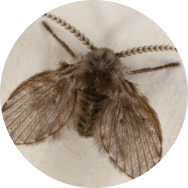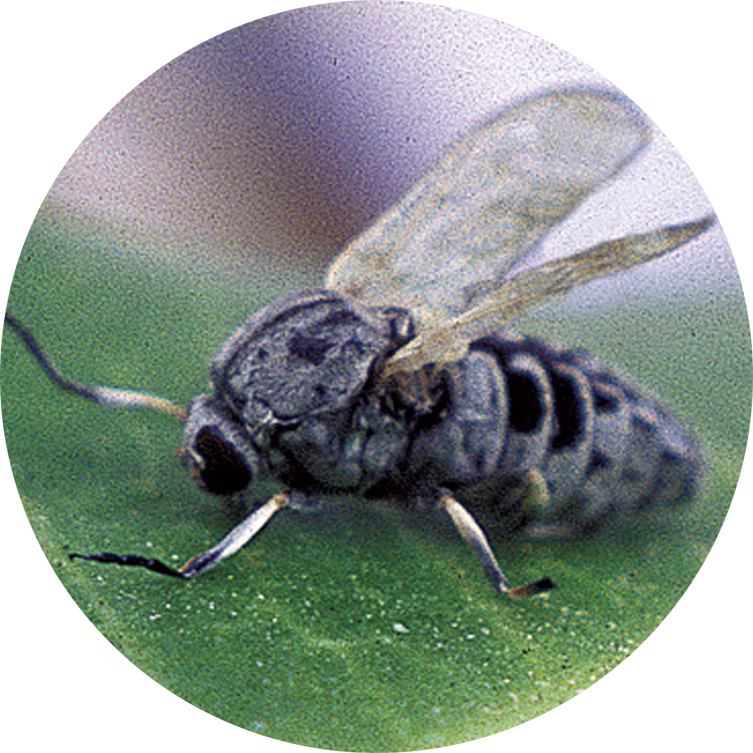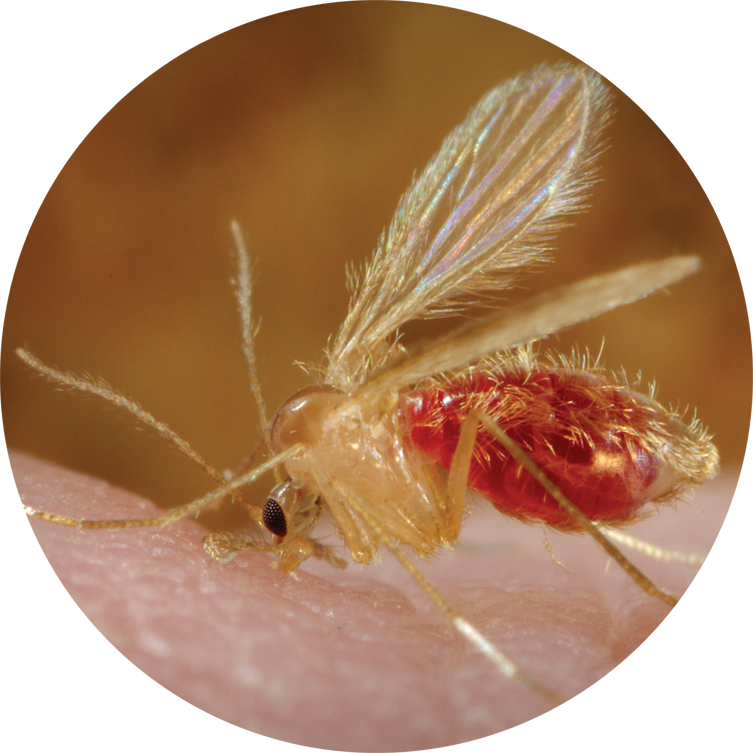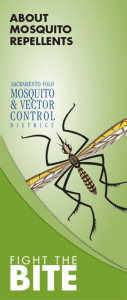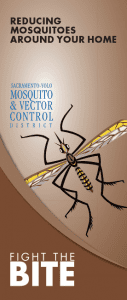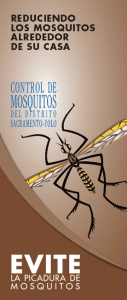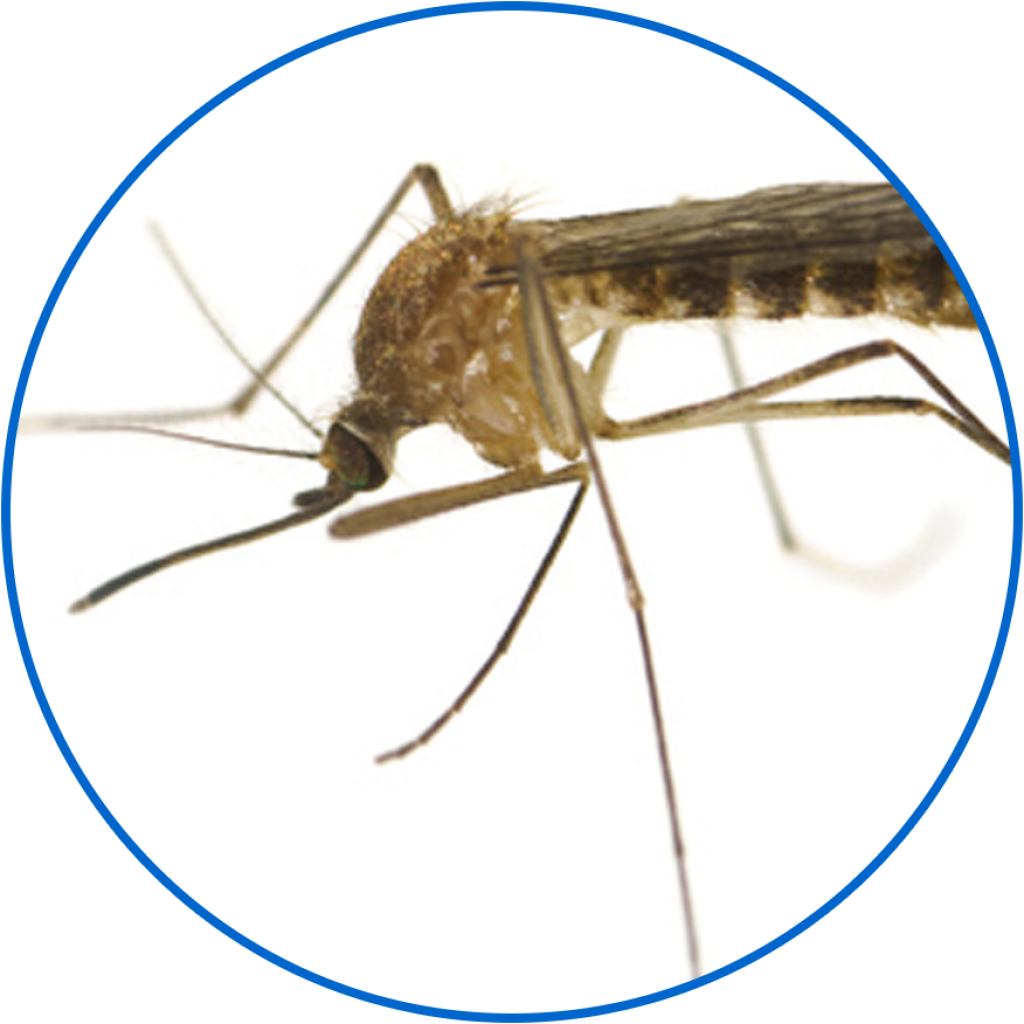MOSQUITO LOOK ALIKES
If you believe that you are having a problem with mosquitoes in your area, first ask yourself, “Am I being bitten?” There are many species of insects that are often mistaken for mosquitoes, but are harmless. You know you have a real mosquito problem if you are being bitten.
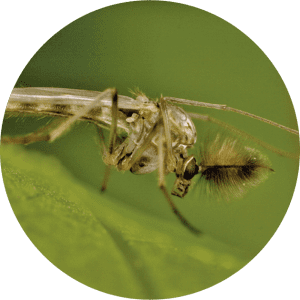
CHIRONOMID MIDGES
These midges are non-biting flies that resemble mosquitoes in size and general appearance. They are approximately a half-inch in length and light green to brown in color, with prominent bushy antenna.
They develop and breed in aquatic habitats similar to mosquitoes. Residents living near reservoirs, lakes, ponds and flood control channels are frequently annoyed by swarming midges.
Midges can be a nuisance from April through September when adults emerge from the water and begin to swarm, these insects usually emerge at sunset and are attracted to light. They overwinter in the water as larvae and are generally found in the muddy substrate at the bottom of the water.
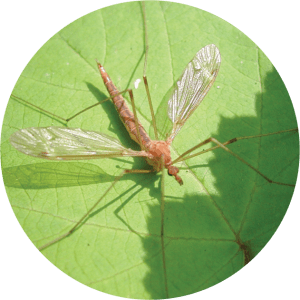
CRANE FLIES (MOSQUITO EATERS; MOSQUITO HAWKS)
Despite their common name, crane flies do not prey on mosquitoes as adults, nor do they bite humans. The most common crane flies encountered by residents in our District are reddish-brown in color, have a body that is up to an inch in length, and long dangling legs. They are clumsy fliers and are attracted to light thus often enter homes. They are most active in the spring and early summer.
Some crane fly species are mosquito-sized, but they can be distinguished from mosquitoes by the V-shaped suture on the thorax, non-piercing mouthparts, and a lack of scales on the wing veins.
Some larval (immature) crane flies may on occasion feed on mosquito larvae but they do not feed on adult mosquitoes. Adult crane flies feed on nectar or they do not feed at all; once they become adults, most crane fly species only live long enough to mate and die.
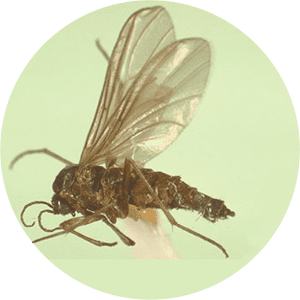
GNATS
Adult gnats do not bite humans yet are often considered a nuisance. Gnats are dark, delicate-looking insects, similar in appearance to mosquitoes. They have slender legs with segmented antennae that are longer than their head. They are relatively weak fliers and are not often found flying around indoors. They generally remain near potted plants and organic debris.
Gnat larvae have a shiny black head and an elongate, legless body. They feed on damp organic debris such as leaf mold, grass clippings, compost, and fungi.
The adult males often assemble into large mating swarms, particularly at dusk.


